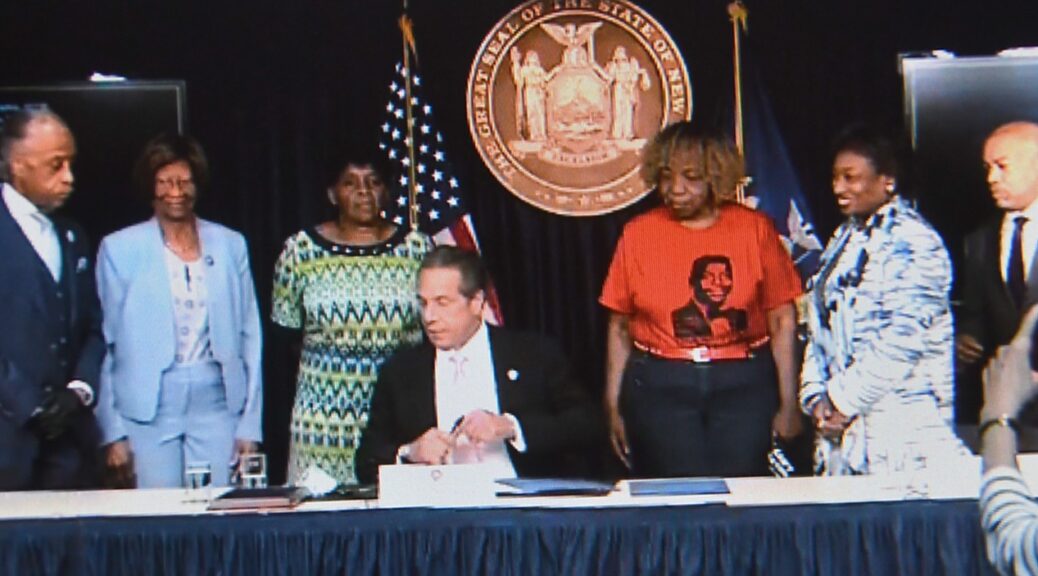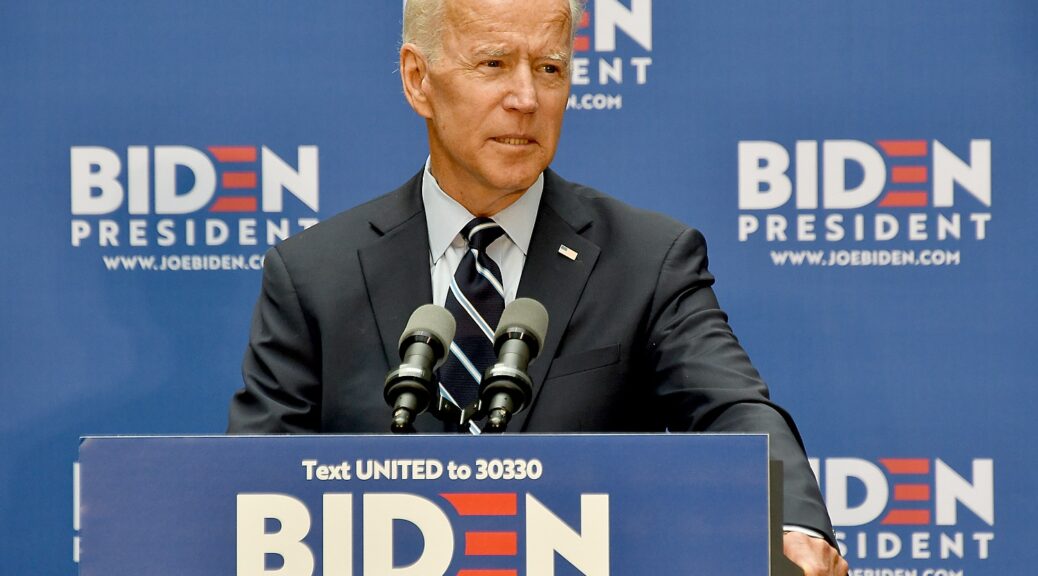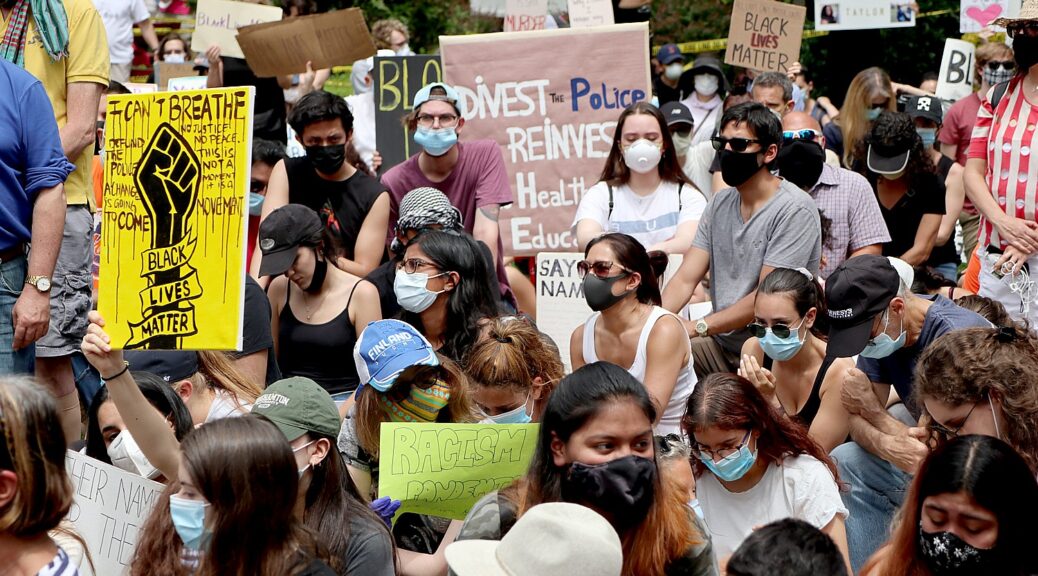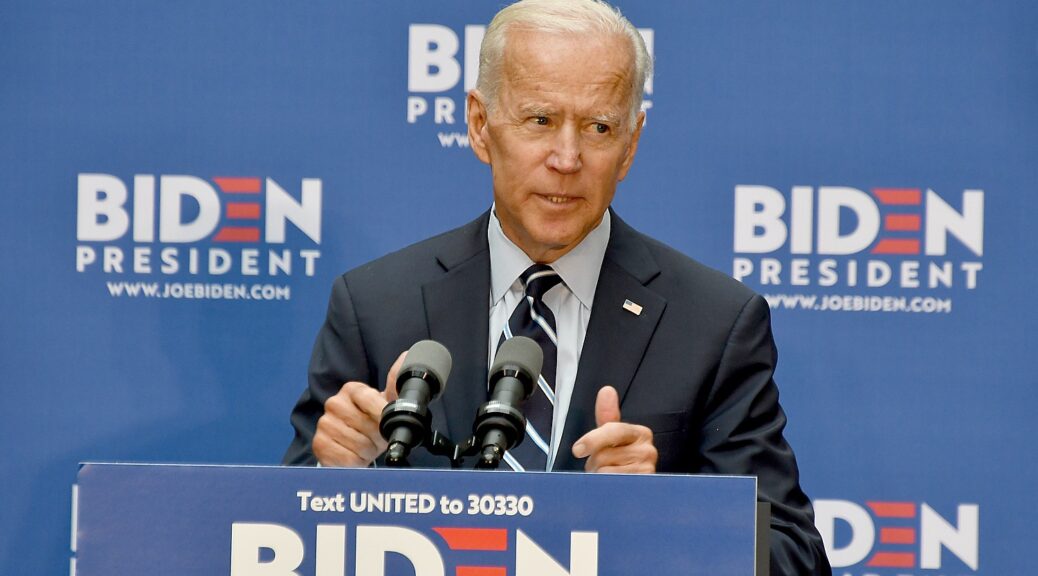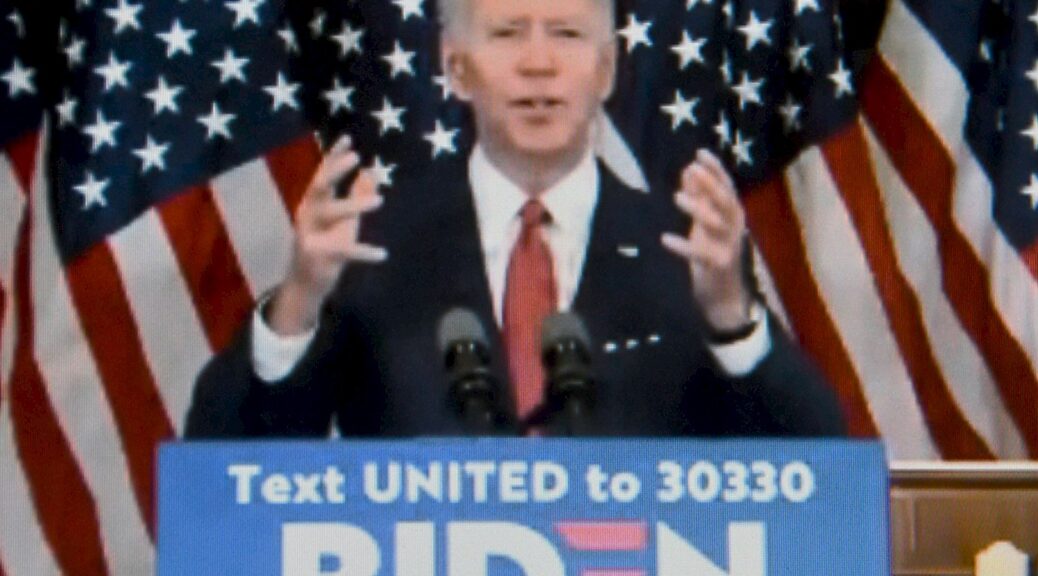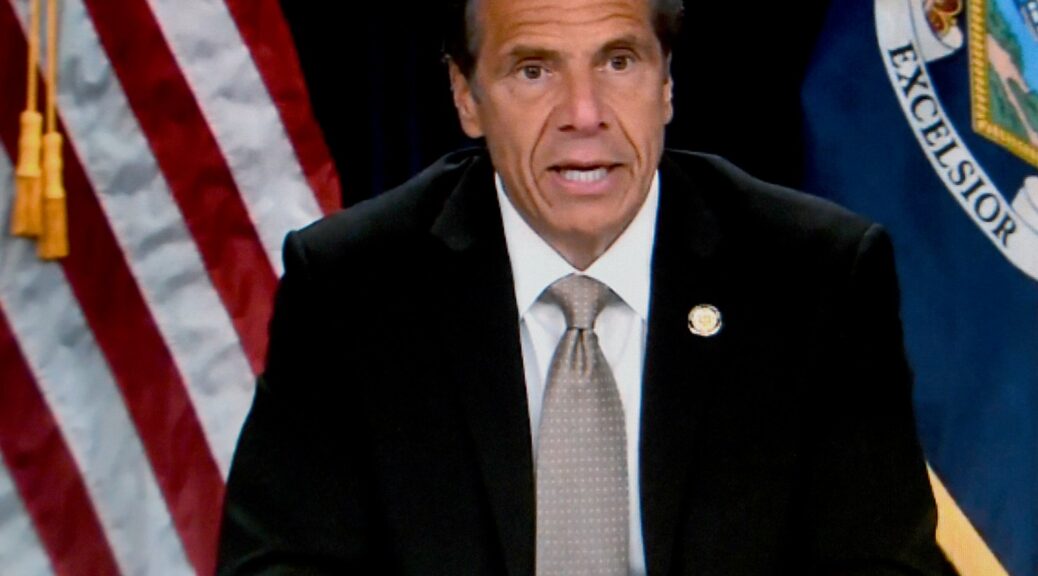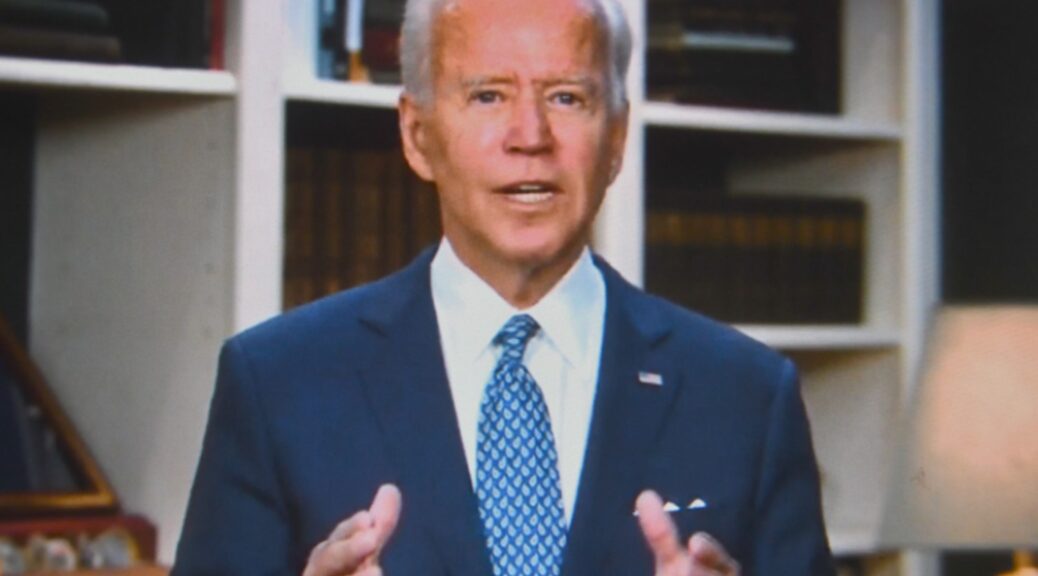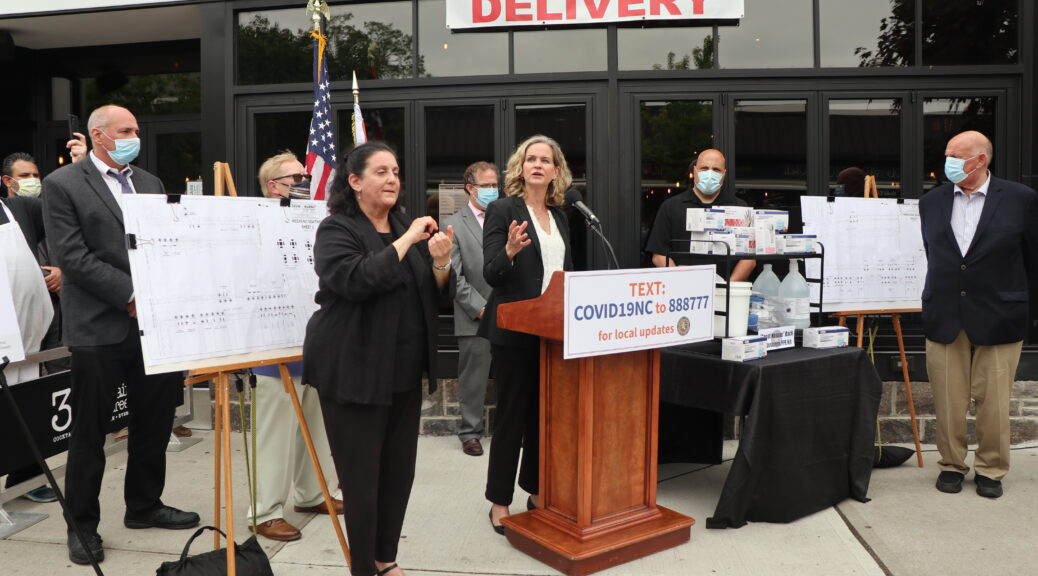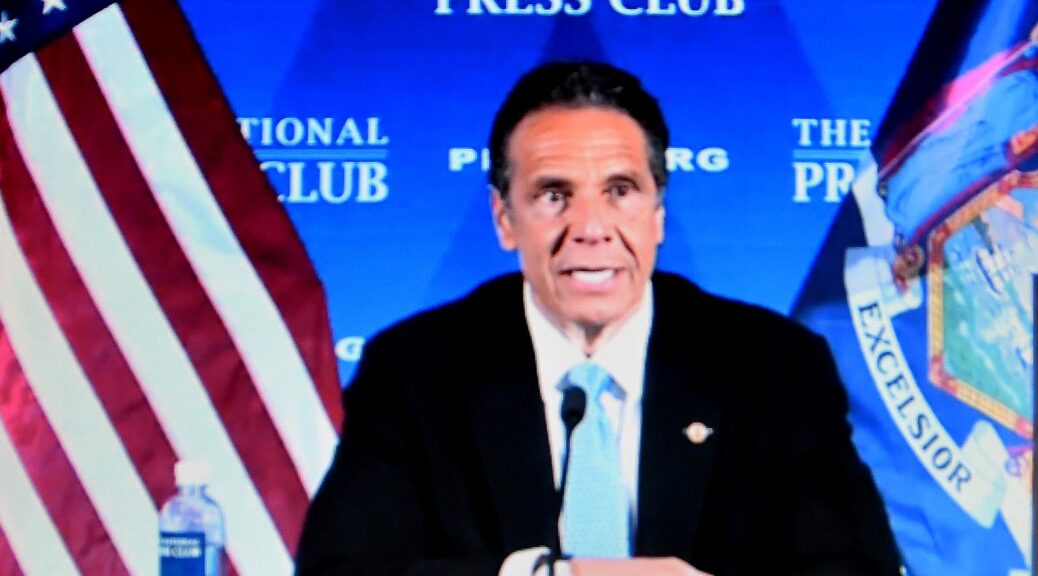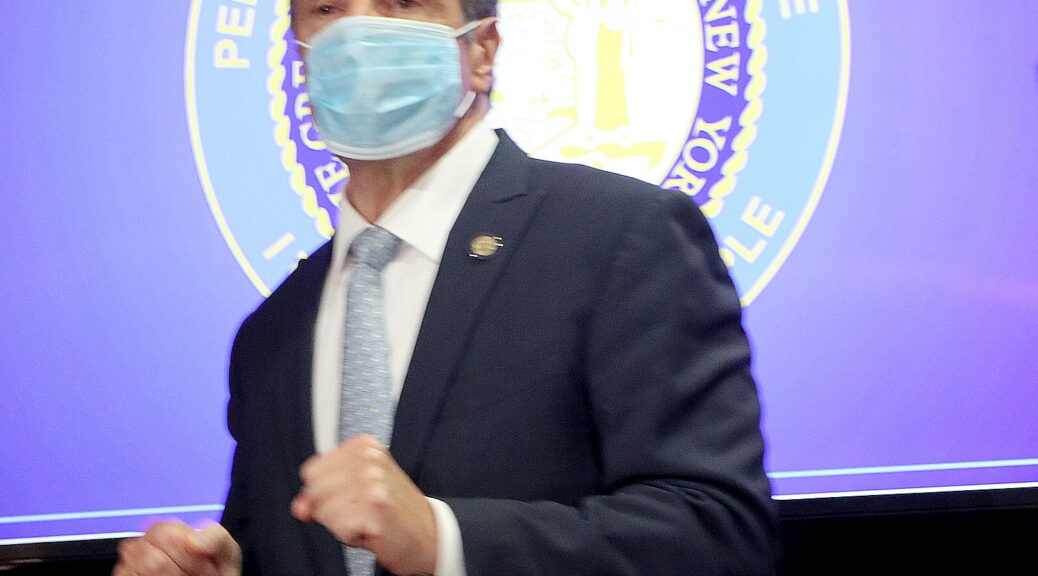
By Karen Rubin, News-Photos-Features.com
Governor Andrew M. Cuomo today signed an Executive Order — the ‘New York State Police Reform and Reinvention Collaborative’ — requiring local police agencies, including the NYPD, to develop a plan that reinvents and modernizes police strategies and programs in their community based on community input. Each police agency’s reform plan must address policies, procedures, practices and deployment, including, but not limited to use of force.
During the same event, attended by Gwen Carr, mother of Eric Garner; Valerie Bell, mother of Sean Bell; NAACP President Hazel Dukes; Reverend Al Sharpton , New York State Assembly Speaker Carl Heastie and Senate Leader Andrea Stewart-Cousins, Cuomo also signed the ‘Say Their Name’ Reform Agenda package following the killing of George Floyd and an ongoing pattern of police brutality against minority communities across the nation. These landmark policing reforms will help reduce inequality in policing and reimagine the state’s criminal justice system. The reforms include:
Allowing for transparency of prior disciplinary records of law enforcement officers by repealing 50-a of the civil rights law;
Banning chokeholds by law enforcement officers;
Prohibiting false race-based 911 reports; and
Designating the Attorney General as an independent prosecutor for matters relating to the civilian deaths.
“The murder of George Floyd was just the tipping point of the systemic injustice and discrimination that has been going on in our nation for decades, if not centuries,” Governor Cuomo said.”These are issues that the country has been talking about for a long time, and these nation-leading reforms will make long overdue changes to our policing and criminal justice systems while helping to restore community confidence in law enforcement.
Under Cuomo’s Police Reform and Reinvention Collaborative executive order, police forces throughout the state, in cities, towns and counties- some 500 of them – must adopt a plan by April 1, 2021 to be eligible for future state funding and certify that they have:
Engaged stakeholders in a public and open process on policing strategies and tools;
Presented a plan, by chief executive and head of the local police force, to the public for comment;
After consideration of any comments, presented such plan to the local legislative body (council or legislature as appropriate) which has approved such plan (by either local law or resolution); and
If such local government does not certify the plan, the police force may not be eligible to receive future state funding.
“The protests taking place throughout the nation and in communities across New York in response to the murder of George Floyd illustrate the loss of community confidence in our local police agencies — a reality that has been fueled by our country’s history of police-involved deaths of black and brown people,” Governor Cuomo said. “Our law enforcement officers are essential to ensuring public safety — they literally put themselves in harm’s way every day to protect us. This emergency regulation will help rebuild that confidence and restore trust between police and the communities they serve by requiring localities to develop a new plan for policing in the community based on fact-finding and meaningful community input.”
Immediately following the death of George Floyd, Governor Cuomo laid out a series of reform policy items – called the “Say Their Name” agenda – including allowing for transparency of prior disciplinary records of law enforcement officers by reforming 50-a of the civil rights law; banning chokeholds by law enforcement officers; prohibiting false race-based 911 reports and making them a crime; and designating the Attorney General as an independent prosecutor for matters relating to the deaths of unarmed civilians caused by law enforcement.
This builds on prior executive actions the Governor has taken including appointing the Attorney General as a special prosecutor in matters relating to the deaths of unarmed civilians caused by law enforcement.
“The horrific murder of George Floyd, the most recent in a long list of innocent people like Breonna Taylor, Ahmaud Arbery, Sean Reed, Tony McDade, and so many more, has led to a rightful outpouring of grief and anger,” Senate Majority Leader Andrea Stewart-Cousins said, who recalled when her own son, at 18 years old, was taken into custody and left with a broken nose. “Black New Yorkers, like all residents of this state, deserve to know that their rights, and lives, are valued and protected by our justice system. The legislation that will be signed today will help stop bad actors and send a clear message that brutality, racism, and unjustified killings will not be tolerated.”
Assembly Speaker Carl Heastie said,”The tragic deaths of George Floyd, Breonna Taylor, Eric Garner, Ramarley Graham and so many others shake us to the core. This week, my colleagues and I in the Assembly Majority answered the call of New Yorkers by passing historic reforms to our law enforcement system. These reforms have been championed by our members for years, and I want to thank my colleagues for their tireless commitment to seeing them through to the finish line. I would also like to thank the families of the victims and the passionate advocates who never tired in this fight for justice. They have courageously channeled their grief into a positive force for change and inspired us to deliver meaningful reforms here in New York.”
Cuomo stressed that actions need to be taken at the federal level to create national standards that root out systemic racism in criminal justice and law enforcement, but that New York State, as the “progressive capital” of the nation, would serve as a model for other states and ultimately the federal government.
“Criminal justice reform should be done on a national level,” he said. “And the House has been very aggressive on reform, the Congress, and I applaud them for it. But New York State is the progressive capital. We never sit back and say just what the nation should do, we show the nation what it should do. We lead by example and we lead by getting it done. We are a state of action and that’s us at our best…”
“There is no quick fix to this,” Cuomo said. “There is no, ’”Well, stop tear gas. Well, change the uniforms.’ That’s not what this is about, my friends. And it would be a mistake if we went down that path. This is systemic reform of police departments. This is sitting down and taking a look at exactly what they do and have been doing and looking at it through a new lens of reform and reinvention, because this has been 40, 50 years in the making. Providing police with military equipment, increasing the number of police, it goes back to the ’90s in the crime bills. Looking at the population explosion in our prisons, this was a long time in coming, and this is not about a press release that’s going to solve it. The way we really solve this is we say to every police agency in this state, I believe it should happen in the nation, sit down at the table with the local community, address these issues, get to the root of these issues, get a plan, pass that plan by your local government, and if you don’t, you’re not going to get any additional state funds, period. We’re not going to fund police agencies in this state that do not look at what has been happening, come to terms with it and reform themselves. We’re not going to be as a state government subsidizing improper police tactics, we’re not doing it. And this is how we’re going to do it.”
Senate Leader Stewart-Cousins spoke personally: “But every parent, every mother who looks like me understood that scary notion with our kids, with our husbands, with our brothers. I got that call when my son, my youngest son was only 18 years old and he was quote unquote on the wrong side of the town, he was stopped, he was frisked. The next thing I know after we’re out of the police station, we’re in the emergency room because he has a fractured nose. Thank god I was able to bring him home. I ache for Gwen, Valerie. I understood that.”
She noted that her brother, Bobby, a Marine vet, a Vietnam War vet, served as a transit police officer for six years, before he left “because he was convinced that the department, that the system was designed so that every young black man would have a record. He knew. He was a good cop, he worked with good cops, but he couldn’t change that. And you knew the system couldn’t change itself.
“And so here we are. We know this isn’t a cure, as the governor said. We know that this is the beginning, but it’s a move to bring justice to a system that has long been unjust. And, again, I thank you for being a partner for making sure that we take to heart this moment that has taken too long to come to. And I thank all of the people in the streets and the leadership of the families to make this happen. So, thank you, Governor.”
Assembly Speaker Heastie reflected, “There are still many other issues of systemic injustice and systemic racism that people of color have to deal with. It’s education and health disparities and these are all things that we have to continue as Government to be a part of. Government is supposed to be problem solvers. When society can’t fix things that’s what government is supposed to come in and chart that costs so this is just a very it’s an emotional day.”
Many reflected on the long list of victims over the past 40-50 years, and sporadic flare-ups of outrage but nothing concrete to change the system. What was different now?
Cuomo opined, “But I think it wasn’t just about Mr. Floyd’s death. I think it was the cumulative impact and I think all the names on that list did not die in vain. I think it took that repeated articulation to get the country to this point. Reverend Sharpton— on every one of those situations— was out there making this point all over the country. All over the country. And finally, finally, the country heard! But the reason we’re here today, make no mistake, is because Rev. Sharpton and good people across the country, were out there making the point every time over and over and over again.
“So, Eric Garner did not die in vain. Shawn Bell did not die in vain. It took— it took a number of lives, unfortunately. it took a number of injustices, unfortunately. But each one was a part in getting to today and it was Rev. Sharpton standing up and making sure the people of this nation heard every time, every injustice happened. And that— that Reverend— is a special ability, a special contribution, and it happened year after year after year and we all respect your effort. We thank you for what you’ve done. We thank you for your voice, which the nation has heard. This state has heard. And not only did we hear you— we’re going to make a difference and this state is going to make a difference and I believe it’s going to be a difference that will resonate across the nation. Because what we’re doing here, making every police agency come to the table with the community— that should be done in every police agency in this country. Together we’ll make it happen. Reverend Sharpton.”
Sharpton replied, ”let us be very clear. There is no governor in this country that has said what he said this morning. He and I are debating sometimes, but he has, in many ways, done things that even I did not expect. To say that every mayor must come up with a plan along these areas or they will withhold state money, is a model for where we ought to be dealing with 21st century civil rights in this country. Make no mistake: this is a new level that all other 49 governors ought to look at, because to say, “I want to see mayors deal with this” and “I want to see city councils deal with this,” is one thing. But to say, “we’re going to hold funds— means that he means it.”
He noted that 20 years ago, when Sharpton organized a March on Washington, Cuomo, then Secretary of Housing & Urban Development, was the only member of Clinton’s cabinet to attend.
“Andrew Cuomo has raised the bar, and I hope every governor in this country will be asked today whether or not they’re going to do what he just did. Somebody has to raise the bar. Then we can say to the Floyd family and others that you really have seen a new day, and we’ve turned a new way in this country. And I think that he has done that and Andrew Cuomo knows that when I don’t think he did whatever, I will tell him. He has gone beyond even my expectations. So enjoy these few minutes. But I think this is a great day.”
Here are more details of the legislation Cuomo signed:
Repealing 50-a (S.8496/A.10611)
Section 50-a of the New York State Civil Rights Law creates a special right of privacy for the personnel records of police officers, correction officers, and firefighters and paramedics employed by the State or political subdivisions. The current law prevents access to both records of the disciplinary proceedings themselves and the recommendations or outcomes of those proceedings, leading to records of complaints or findings of law enforcement misconduct that did not result in criminal charges against an officer almost entirely inaccessible to the public.
Repealing 50-a will allow for the disclosure of law enforcement disciplinary records, increasing transparency and helping the public regain trust that law enforcement officers and agencies may be held accountable for misconduct.
Banning Chokeholds (S.6670-B/ A.6144)
In 1993, the New York City Police Department completely banned its officers from using chokeholds, but the ban has not prevented police officers from using this method to restrain individuals whom they are trying to arrest and the continued use of chokeholds has resulted in too many deaths. This new law creates criminal penalties when a police officer or peace officer uses a chokehold or similar restraint and causes serious physical injury or death.
Senator Brian Benjamin said, “Criminalizing the use of the chokehold by police or peace officers punishable up to 15 years in prison is an important step that will bringing sorely needed police accountability reform to New York State. It is time that we make it abundantly clear that no one is above the law. This is the first law that I am aware of that establishes an enhanced offense specifically on police officers and that is primarily because those who we hire to protect and serve must be held to a higher standard. I would like to thank the Senate and Assembly for passing the ‘Eric Garner Anti-Chokehold Act,’ and Governor Cuomo for signing this legislation that will help to save the lives of unarmed black men and women who encounter the police and hopefully begin the process of establishing trust and reducing tensions with law enforcement and communities of color.”
Assembly Member Walter T. Mosley said, “George Floyd and Eric Garner yelled out the same words as they were brutally killed by police officers. We need real change to protect black Americans, and part of that is ensuring there are consequences for misconduct on the part of police officers. This legislation is one of many steps in that direction. I thank Governor Cuomo for signing this bill into law and hope to continue working with his administration to make our state a fairer and more equal place to call home.”
Prohibiting Race-Based 911 Calls (S.8492/A.1531)
Recent years have shown a number of frivolous and false calls to 911 based on the callers’ personal discomfort with other people and not for any particular threat. This new law makes it a civil rights violation to call 911 to report a non-emergency incident involving a member of a protected class without reason to suspect a crime or an imminent threat.
Senator Kevin Parker said, “Social media is rampant with videos of people weaponizing the 911 emergency system against African-Americans hoping to see them falsely arrested or worse. This legislation is by no means a solution to the systemic injustices and prejudices that fuel these types of calls to the police. However, this law gives victims of this despicable behavior the beginnings of some recourse. I am glad that it was passed, together with other important police reform bills, and I thank Governor Cuomo for signing it into law.”
Appointing Attorney General as Independent Prosecutor for Police Involved Deaths (S.2574-C/A.1601)
This new law establishes an Office of Special Investigation within the Office of the Attorney General to investigate and, where appropriate, prosecute cases where the death of a person follows an encounter with a law enforcement officer. The law also requires the new Office of Special Investigation to produce a report explaining the reasons for its decision regardless of whether it chooses to pursue charges. This will help improve public confidence in the criminal justice system by removing a potential conflict of interest in these types of investigations. This law builds on the Governor’s Executive Order No. 147 from 2015 which established the Attorney General as an independent prosecutor in instances of police-involved deaths.
Assembly Member Nick Perry said, “Over twenty years since police unloaded 41 shots killing Amadou Diallo, nearly six years after the merciless choking of Eric Garner, it took the videos of the heartrending death of George Floyd to finally help us break through the blue wall of silence and resistance to the public cry for criminal justice reform and changes in the prosecution of cases involving death at the hands of the police, who are supposed to protect us. We know that this new law will not end our quest for an assurance for fairness in the process for prosecuting crimes by bad police officers, but it is a big step in the right direction. Millions of New Yorkers and I are delighted that the Governor has signed this bill into law.”
________________________
© 2020 News & Photo Features Syndicate, a division of Workstyles, Inc. All rights reserved. For editorial feature and photo information, go to www.news-photos-features.com, email [email protected]. Blogging at www.dailykos.com/blogs/NewsPhotosFeatures. ‘Like’ us on facebook.com/NewsPhotoFeatures, Tweet @KarenBRubin

